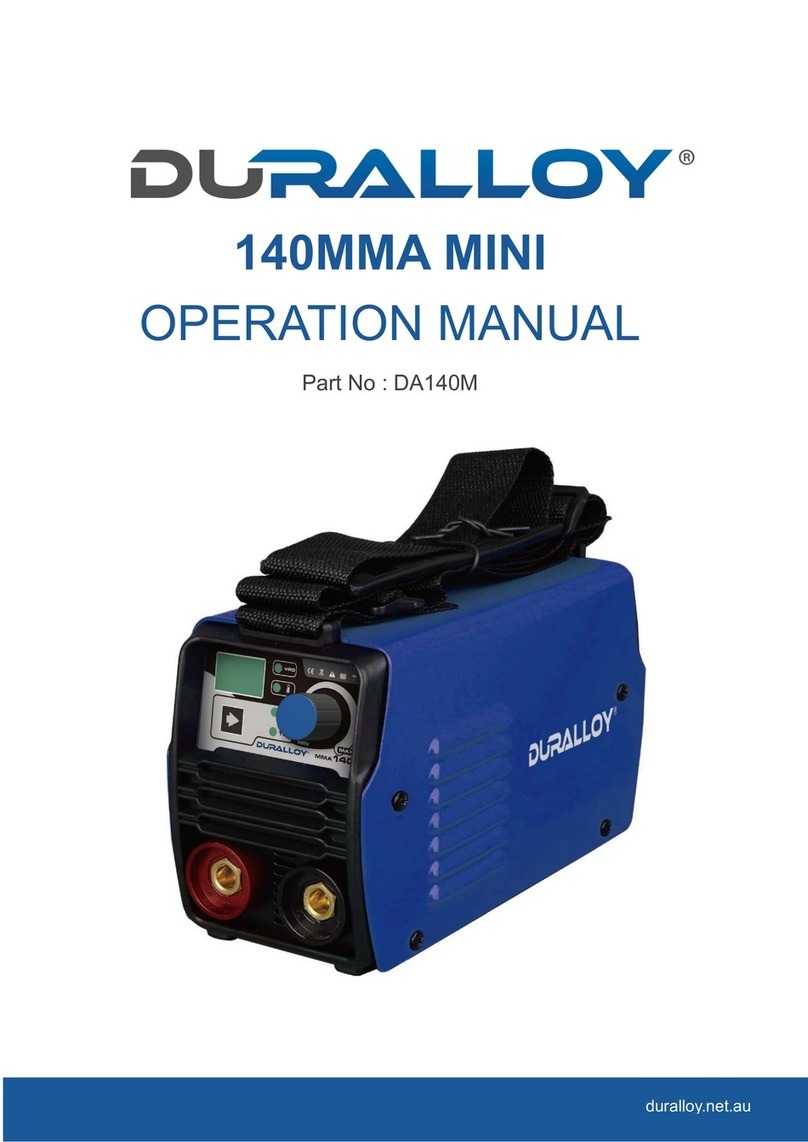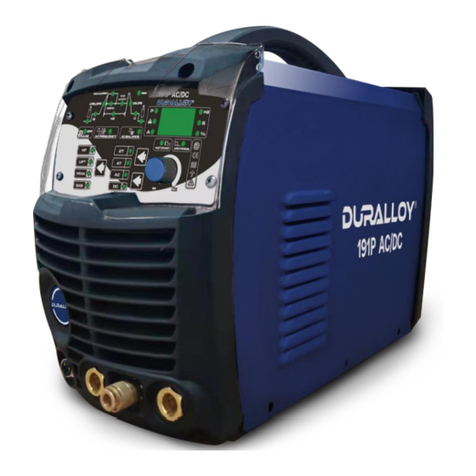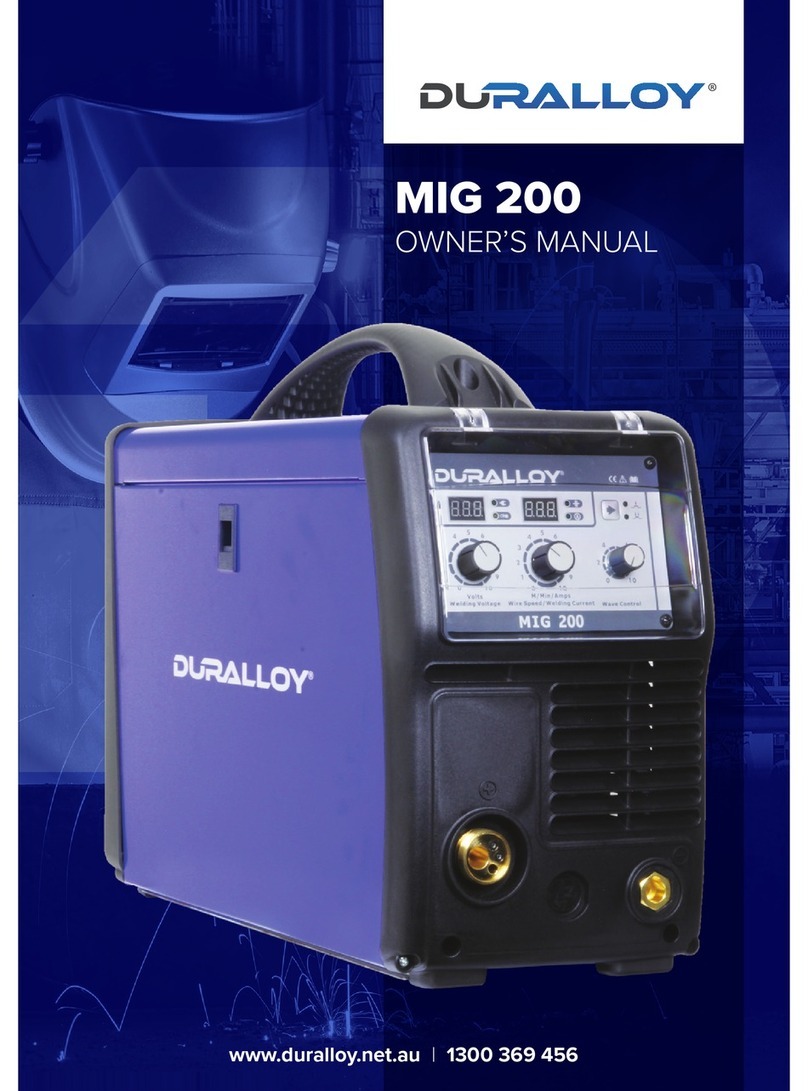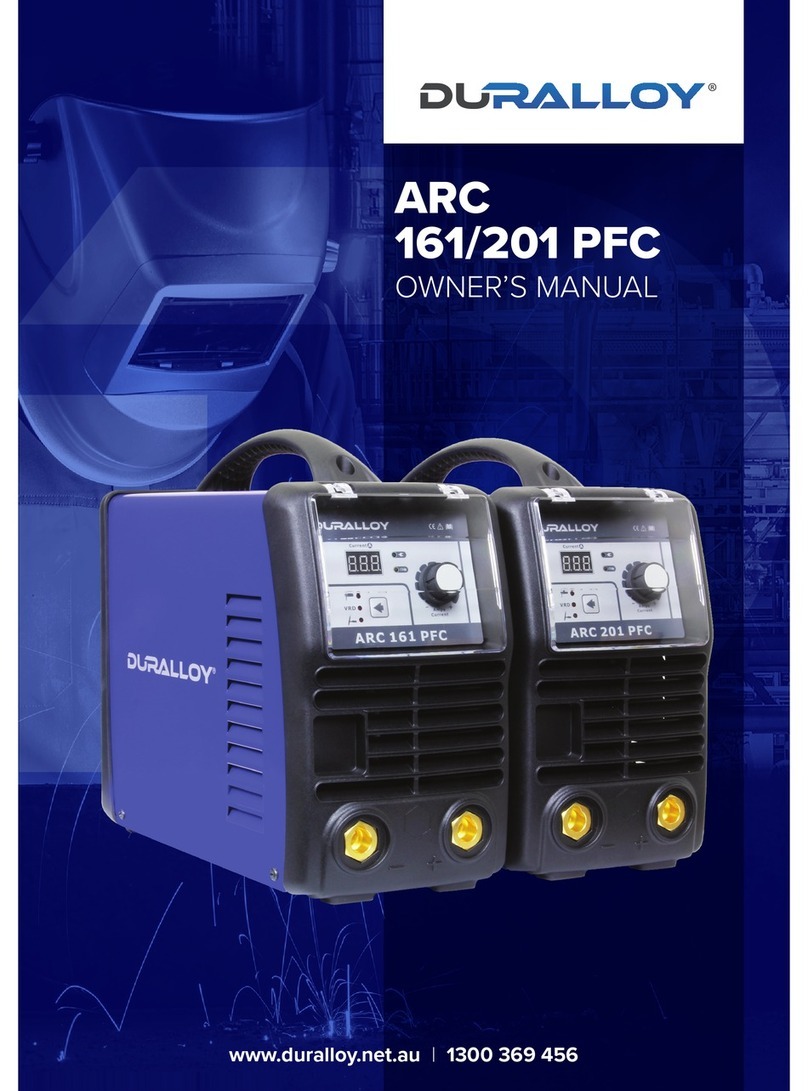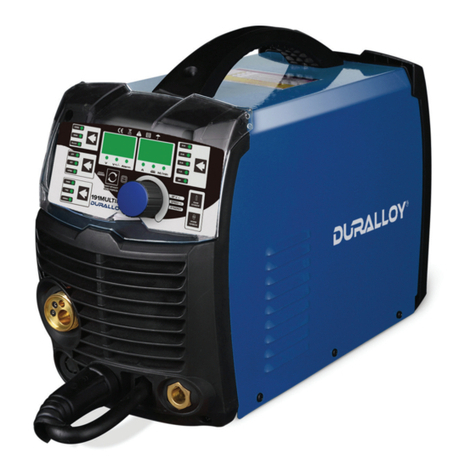
FURTHER CONTROLS EXPLAINED
Overload/ Error Indicator (3)
Lights when over voltage, over current or electrical
overheating (due to exceeding duty cycle) is detected and
protection is activated.
When protection is activated, welding output will be disabled until
the safety system senses the overload has reduced suciently
and indicator lamp goes out. May also trigger if machine
experiences an internal power circuit failure.
Torch System Error Indicator (4)
Lights when issue with torch system or air supply detected
and cutting output is disabled as a result. Flashing light means
that torch shield cap is not installed. Continuous light means
likely damaged or missing torch consumables or insucient air
pressure supply to the torch.
Compressed Air Testing/Setting Switch (6)
When positioned as ‘set’ compressed air control valve is open
continuously. This is useful for testing and setting the air pressure
without having to activate the trigger circuit. ‘Run’ position is
normal operation.
TIPS & TRICKS
Air Regulator Pressure Adjustment
Correct air pressure is critical for plasma cutting. Incorrect air
pressure will cause poor cut quality, lack of cutting power,
damage to the plasma torch and consumables and potentially
damage the power source. Optimum air pressure is between 0.45
and 0.5 MPa (65-75psi). Air pressure should be set with the air
flowing through the torch, as the pressure with the air flowing will
normally be less than static pressure, due to flow losses through
the torch system. To unlock the pressure regulator knob in order
to adjust it, pull the knob upwards. Once the pressure is set
correctly, push the knob down again to lock it into place.
Air Filter/ Water Separator
As with correct air pressure, clean, dry air is also critical for
plasma cutting machine performance and reliability. The
DURALLOY CUT 40PFC MV is supplied with an air filtration/
moisture separator to assist with providing suitable air supply.
The moisture separator is self-draining, the water drain tube exits
out the bottom of the clear condensate bowl. It is normal to see
moisture coming from this tube periodically. If excessive amounts
of water or oil are being produced in the condensate bowl and
drain line, the compressed air supply should be checked for
issues.
www.duralloy.net.au | 1300 369 456
Pilot Arc System
The DURALLOY CUT 40PFC MV use a pilot arc system to
establish the main cutting arc. A pilot arc system is a circuit where
the return is back through the torch head and cable. This means
it can create a small arc with some cutting power without making
any electrical connection with the main machine earth. This is
especially useful for starting cuts on material that does not have a
good initial earth connection, such as paint, rust, scale.
Once the pilot arc is established and power is flowing back
through the main earth, the pilot arc is switched o and the main
arc started. Please note the pilot arc circuit is only designed to
operate for short periods of time as an auxiliary starting system,
so it has a safety protection that only allows the pilot arc to run for
short periods at a time. In addition to this, these models also have
a plot arc controller system if the main arc cuts out and the torch
remains to be triggered, the pilot arc will reignite. This is useful for
cutting discontinuous workpieces like mesh or grids.
It is very important to recognise that plasma torch consumables
wear as part of normal operation and should be replaced in a
timely manner. Operating a torch with worn consumables will
cause poor cutting results and possible damage to the torch
and machine itself. Damage caused by untimely replacement of
consumables will not be covered by warranty.
Use the following guidelines to determine when consumables
should be replaced:
Cutting Tips: The cutting tip has a small calibrated orifice that the
plasma passes through. If the orifice becomes partially blocked,
deformed or enlarged, the cutting tip should be replaced.
Electrodes: The electrode has a small silver ‘hafnium’ insert in the
end of the tip. This is what generates the plasma ions. Once the
hafnium insert is gone or is damaged the tip must be replaced.
Swirl Ring/Retaining Cap: These should be replaced if broken,
chipped, cracked or badly heat damaged.
Tips and electrodes: These should wear reasonably evenly and
it is normal practice to replace them both together. If a new tip
is inserted with a worn electrode the tip will wear much more
quickly than if the electrode was also replaced at that same
time. If tips or electrodes are wearing much faster than the other
component it is likely to be caused by one of the following: poor
operator technique, incorrect air supply or damaged torch head.
It is also very important to only use genuine DURALLOY
consumables and parts for the XT4000 torch. They are
engineered to suit the machine and non-genuine items may
cause lack of performance, short life span, torch and machine
damage and void warranty.
6
CUT 40PFC MV
OWNER’S MANUAL








